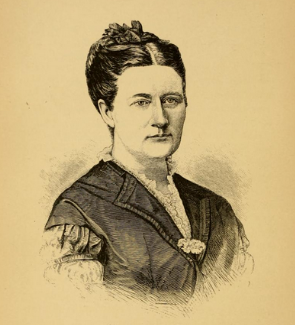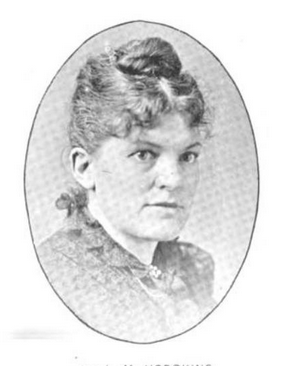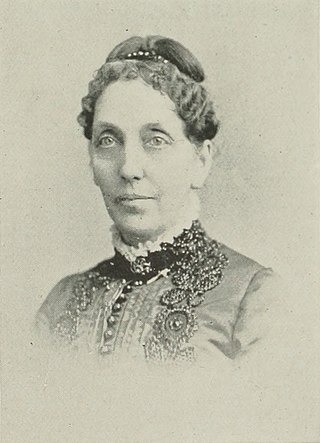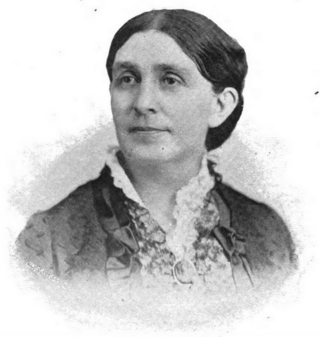American Southern Methodist Episcopal Mission was an American Methodist missionary society operated by the Methodist Episcopal Church, South that was involved in training and sending workers to urban centers in the U.S. as well as to other countries. The Board of Foreign Missions approved those missionaries who were sent to work in evangelical projects. Missions began in China during the late Qing Dynasty.
The population of Angola is more than 92% Christian as of 2023.
Protestants in Japan constitute a religious minority of about 0.45% of total population or 600,000 people in 2020.

In Christianity, the ordination of women has been taking place in an increasing number of Protestant and Old Catholic churches, starting in the 20th century. Since ancient times, certain churches of the Orthodox tradition, such as the Coptic Orthodox Church, have raised women to the office of deaconess. While ordination of women has been approved in many denominations, it is still a very controversial and divisive topic.

Clara A. Swain was an American physician and Christian missionary of the Methodist Episcopal Church. She has been called the "pioneer woman physician in India," and as well as the "first fully accredited woman physician ever sent out by any missionary society into any part of the Non-Christian world". Her call to service in India fell from a need to have a female physician provide quality medical care to high-caste women, that were religiously secluded to zenana. Supported by the Woman's Foreign Missionary Society of the Methodist Episcopal Church, Swain left the United States in 1869, for Bareilly, India, where she spent the next twenty-seven years of her life treating women and children from illnesses, while simultaneously working to evangelize natives.
Woman's Union Missionary Society of America for Heathen Lands was an American Christian mission organization. Established in 1861, its headquarters were at 41 Bible House, Astor Place, New York City. The first meeting called to consider organizing a society was gathered in a private parlor in New York City on January 9, 1861, and addressed by a returned missionary from Burma. At a subsequent meeting on January 10, the organization was effected, with Sarah Platt Doremus as president. The society's object was to "send out and maintain single women as Bible-readers and teachers, and to raise up native female laborers in heathen lands".

Annie Maria Barnes was a 19th-century American journalist, editor, and author from South Carolina. At the age of eleven, she wrote an article for the Atlanta Constitution, and at the age of fifteen, she became a regular correspondent of that journal. In 1887, she began publishing The Acanthus, a juvenile paper published in the Southern United States. Barnes published novels from 1887 until at least 1927.

Louise Manning Hodgkins was an American educator, author, and editor from Massachusetts. After completing her studies at Pennington Seminary and Wilbraham Wesleyan Academy, she became a teacher and preceptress at Lawrence College, before receiving a Master of Arts degree from that institution in 1876. She taught at Wellesley College for over a decade before turning her attentions to writing and editing. Her main works included Nineteenth Century Authors of Great Britain and the United States, Study of the English Language, and Via Christi. She served as editor of The Heathen Woman's Friend, the first organ of the Woman's Foreign Missionary Society of the Methodist Episcopal Church, and also edited Milton lyrics : L'allegro, Il penseroso, Comus, and Lycidas and Matthew Arnold's Sohrab and Rustum. She died in 1935.

Euphemia Wilson Pitblado was a Scottish-born American women's activist, social reformer, and writer. She traveled in Europe, Canada, and in the United States, crossing the Atlantic five times. Pitblado was a delegate to the National Woman Suffrage Association Convention in Washington, D.C., the New England Woman's Suffrage Association Conventions, the National Woman's Christian Temperance Union (WCTU) Conventions in New York City, Denver, and Chicago, and to the annual Woman's Foreign Missionary Conventions in Boston and Lowell, Massachusetts. Her principal literary works were addresses upon temperance, suffrage, missions, education, and religion.

Mary Sparkes Wheeler was a British-born American author, poet, and lecturer. She wrote the lyrics to several hymns, including two well-known soldiers' decoration hymns. Her poems were set to music by Professor Sweeney, P. P. Bliss, Kirkpatrick and others. She was the author of Poems for the Fireside (1883), Modern Cosmogony and the Bible (1880), First decade of the Woman's Foreign Missionary Society of the Methodist Episcopal Church : with sketches of its missionaries (1883), As it is in Heaven (1906), and Consecration and purity, or, The will of God concerning me (1913).

Elizabeth Lownes Rust was a 19th-century American philanthropist, humanitarian, and Christian missionary. She conceived the idea of the Woman's Home Missionary Society of the Methodist Episcopal Church, and as its corresponding secretary for nearly twenty years, she helped to shape its policies. Rust is remembered as a woman of vision. Rust died in 1899.

Harriette G. Brittan was a pioneer British-born American missionary to Liberia, India and Japan. Finding herself unable to live in Africa because of repeated attacks of tropical fever, she was compelled to return to the United States. A year or two later, she went to India where she labored for twenty years. In 1880, she came to Japan and founded Brittan Girls’ School, later known as Yokohama Eiwa Gakuin. At the age of sixty-three, she gave up regular mission work and for a number of years, conducted a boarding house. When her health started to fail, she returned to the U.S. and died one day after reaching San Francisco.

Mary Reed (1854–1943) was an American Christian missionary to India. For the first ten years of her career, she worked as a school teacher in her home state of Ohio. In 1884, she went to India as a missionary of the Cincinnati Branch of the Woman's Foreign Missionary Society of the Methodist Episcopal Church, and entered upon zenana missions work at Cawnpore. In 1890, she became conscious of a strange physical disability, and thinking that her health was failing, returned to the U.S. on a furlough. While recovering in Cincinnati came the dread suspicion and subsequent discovery that the malady was leprosy. At first, she was overwhelmed with the realization, but she quickly decided to give her life to work among the lepers in India, and her thoughts turned to Pithoragarh, among the foothills of the Himalayas, at the base of Chandag Heights, where a group of lepers lived in whom she had already become interested. Her suspicions as to the nature of her disease were confirmed by every specialist she consulted. She kept the diagnosis a secret, however, from her family, with the exception of one sister, and returned to India in 1891. Proceeding to Pithoragarh, Reed informed her family and friends by letter of her purpose, and her reason for choosing this service. Thereafter, she conducted her important work at Chandag, and built up an institution which in many respects was a model of order and well-arranged facilities. Reed continued to work among the lepers of India until her death in 1943. She was a recipient of the Kaisar-i-Hind Medal.
Young People's Missionary Movement of the United States and Canada was an American publisher of Christian missionary educational literature and provider of missionary studies through conferences, institutes, and other types of training. It was an interdenominational Protestant organization focused on the needs of young people. Established in 1901, the Young People's Missionary Movement was incorporated at Silver Bay, New York on July 18, 1902. The office of the Movement was first opened in New York City in January, 1903. The organization evolved into the Missionary Education Movement of the United States and Canada in 1911, under an expanded scope.
Belle Caldwell Culbertson was an American author and philanthropist, active in social and religious reforms. She served as president, Woman's Foreign Missionary Society of the Presbytery of Washington City; president, Woman's Inter-Denominational Missionary Union of the District of Columbia; and president, Washington Auxiliary Mission to Lepers. Other positions included: Trustee, Anti-Saloon League; Trustee, International Reform Bureau; vice-president, Mothers' Congress of D.C.; and member, Executive Board, Woman's Christian Temperance Union (W.C.T.U.).

Loretta C. Van Hook was an American missionary and educator in Persia. Characterized as a quiet, sad-faced, delicate woman, Van Hook attended Rockford College of Rockford, Illinois when she was a widow, having lost her husband and only child in 1872. She began then to prepare for mission work and went to Tabriz, Persia, under the Presbyterian Board of Missions. She established there a boarding school for girls, modeled after Rockford. Van Hook did much evangelistic work in Persia and lectured extensively in the U.S. on return trips. She made five journeys to the U.S. from Persia, and on each trip visited different places of interest in Europe.

Jennie M. Bingham was an American writer and litterateur.

Julia Lore McGrew (1849–1942) was an American physician and medical missionary in India. Affiliated with the Woman's Foreign Missionary Society of the Methodist Episcopal Church, she was, in 1876, the first to provide medical missionary services in Moradabad.












